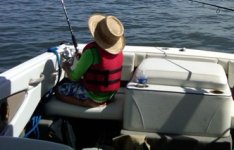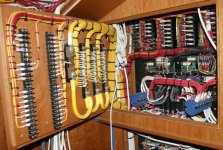I am planning to put in a Perko Battery Switch....
Question is location?

Underneath/Behind both stern seats is a compartment, the port side has a battery in it and I want to put second battery in the other one.
I plan to put the switch underneath the seat and outside the battery compartment. My concern is that the switch could cause a spark when rotating between positions and I feel I should treat the battery compartment as one with the engine compartment since there are openings between them.
Any thoughts?
Question is location?
Underneath/Behind both stern seats is a compartment, the port side has a battery in it and I want to put second battery in the other one.
I plan to put the switch underneath the seat and outside the battery compartment. My concern is that the switch could cause a spark when rotating between positions and I feel I should treat the battery compartment as one with the engine compartment since there are openings between them.
Any thoughts?



